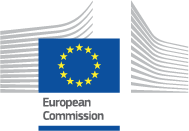WORKING WITH DG ECHO AS AN NGO PARTNER | 2021 - 2027
10. IMPLEMENTATION
2. Project Data Overview By Country
3. Humanitarian Organisations In The Area
4. Needs Assessment And Risk Analysis
12. Visibility, Communication And Information Activities
13. Financial Overview Of The Action
14. Requests For Alternative Arrangements
15. Administrative Information
HUMAN RESOURCES
10.1 HUMAN RESOURCES AND MANAGEMENT CAPACITIES
The partner must explain briefly how human resources (both expatriate and local) will be mobilised to ensure an effective and efficient implementation of the Action. It will explain for instance the organisational and management structure put in place (e.g. at the Action's locations, at capital level, at regional level, or in exceptional cases the structures in place for remote management).
When applicable in the context of the Action, the partner will also specify if specific technical qualifications will be required.
10.2 DO YOU INTEND TO DEPLOY EU AID VOLUNTEERS IN THE FRAMEWORK OF THE ACTION?
The use of volunteers is not referred to in the Model Grant Agreement or in the budget: the default answer to the question is "No".
LOGISTICS
10.3. LOGISTICS
10.3.1 ARE YOU OVERSEEING YOUR ENTIRE SUPPLY CHAIN?
The partner is expected to answer "No" only if it is relying on other entities (e.g. Humanitarian Procurement Centre, Global Logistics Cluster, through joint procurement initiatives etc.) to oversee the supply chain either fully or partially.
10.3.2 PLEASE BRIEFLY DESCRIBE THE APPROACHES YOU ARE USING. IF USED, PLEASE ALSO PROVIDE DETAILS ON THE HUMANITARIAN PROCUREMENT CENTRE
This section emphasizes the importance of the appropriate monitoring of the supply chain.
This question aims to assess the level of reliability in terms of timing of the logistics, to understand if the planning to implement the operation is realistic all along the supply chain up to the final delivery, and to foresee any possible obstacles or risks along the entire supply chain, so that DG ECHO and the partner can have a better understanding of these together during implementation of the project.
The partner is expected to provide information, inter alia, on:
- specific procurement arrangements, e.g. use of common or pooled services; , use of particular environmentally sustainable approaches etc; if applicable, use of Humanitarian Procurement Centre;
- information related to the procurement of the main/essential equipment and goods, such as where the goods will be procured (internationally, regionally, locally) and by whom, consideration of elements such as cost efficiency and quality of the goods procured, and information relating to the environmental dimension of the procurement and delivery.
- information related to how the project has incorporated the relevant minimum environmental requirements from the Cross-cutting chapter on sustainable supply chains. In case the environmental dimension of the procurement and delivery was already covered in the above sections, this is optional in this section.
In those cases where the partner intends to purchase food or medical supplies, without the support of one of the Humanitarian Procurement Centres (HPC) , it will indicate here briefly its procurement plans. including how it intends to ensure the quality standards of the items purchased.
The partner can provide here also information on possible market analysis made in relation to the purchase of food locally.
The partner may also provide information about the necessity of expensive support equipment in case the partner does not intend to apply depreciation.
10.4.1 DO YOU ANTICIPATE ANY IMPLEMENTATION CHALLENGES IN THE SUPPLY CHAIN?
The partner has to select the most appropriate option relevant to its situation in respect to anticipated challenges to supply chain management which could include inter alia procurement challenges, customs delays, access issues, difficulties in last mile delivery, or environmental damage caused by the procurement.
The by-default answer is “NO”, but if the “YES” option is chosen an additional field will be displayed.
10.4.2 PLEASE DESCRIBE SHORTLY THESE CHALLENGES AND INDICATE HOW YOU FORESEE TO MITIGATE THEM
the partner has to provide information on the main foreseen/envisaged challenges linked to the procurement/supply of essential equipment and goods, along the entire supply chain, including the green/environmental dimension.
WORKPLAN
10.5 WORKPLAN
Work plan reminds the partner that it has to attach a work plan to the proposal. The work plan is an important tool to assess the feasibility of the Action. A common way to present a work plan is through a Gantt chart. Other possibilities exist and can be used as long as they are clearly presented and commented upon.
OTHER PARTICIPANTS IN THE ACTION – FOR NGOS ONLY
Partners may entrust tasks forming part of DG ECHO-funded actions to one or several other entities, on a non-profit basis. This can be done provided that the prospect of having recourse to partners is presented, explained and justified in the Single Form, together with the estimated budget share that would be allocated to the partners. The Organisation is responsible for ensuring that the conditions applicable to it under the Agreement, including accountability and effective internal control systems, are also extended to its partners.
Definition of co-partner
A co-partner is another certified DG ECHO Partner which will cooperate with the certified partner submitting the proposal (the “coordinator”): it will be registered as “co-beneficiary” in the grant agreement to be concluded with the Commission.
Definition of Implementing Partner
An IP is any legal non certified entity other than the certified DG ECHO Partner (i.e. the Partner signing the grant agreement with DG ECHO), to which the Partner entrusts any task under an ECHO-funded action, and transfers the corresponding financing. In this respect, an IP is any of the following entities:
1. Entities affiliated to the grant-holder or with which the latter is affiliated (e.g. NGO families, networks, federations, etc.). Such entities may be involved in the implementation of an action, for example with the following functions (not mutually exclusive):
- Performing administrative and programmatic tasks;
- Performing operational tasks, e.g. implementing the action as the registered entity in the country of implementation.
2. Local entities: entities established in the country of implementation of the action (e.g. local or grassroots organisations).
3. Non-local entities: entities, which are neither affiliated to the grant-holder nor established in the country of implementation of the action.
Information on Implementing Partners to be provided in Single Form
At proposal stage: Partners provide provisional, but comprehensive, list of IPs (including their name, address, type, status, amount of EC budget allocated, IP level, etc.)
10.6. ARE THERE ANY OTHER PARTICIPANTS IN THE ACTION?
When your organization is implementing an action with the support of other participants, you have to tick “YES” in Section 10.6 and provide in Section 10.6.1 all information related to other entities involved, whether co-beneficiaries (in case of Certified ECHO Partners) or implementing partners (when non-Certified entities).
Every time you implement an ECHO-funded action together with another (or more) Certified ECHO Partners, you sign a multi-beneficiary grant. As coordinator of the consortium, you are the only party signing the grant agreement while the other co-beneficiaries will accede to the grant agreement by signing the ‘Accession Form’ – Annex 3 to the MGA. (Availalbe in the Reference Documents section)
The partner has to indicate first whether it intends to work with other entities or not. The default answer is “Yes”.
- If the answer is “No”. The partner will be required to provide a short rationale for not working with local/national actors. However, partners have the possibility to adapt this statement later during the Action implementation. Note that a change in co-partner will be considered as a substantial change to the grant agreement, whereas IPs can be added in the course of implementation.
- If the answer is “Yes”, the sections below will be requested to provide additional information.
10.6.1 IMPLEMENTING PARTNERS / CO-PARTNERS
Type: the partner has to select the type of participating organisation, making the choice between "certified partner" (co-partner) and "non certified-partner" (implementing partner). A co-partner is a "certified partner" associated with the partner submitting the proposal for implementation of this action.
Name: if the partner selected the option co-partner it will have to select the name of the organisation from the provided drop-down list. If the partner selected the option implementing partner it will have to provide the name of the implementing partner.
Address: this field is only visible in case of implementing partners.
Status: this field is only visible in case of implementing partners. The partner will have to select the status of the implementing partner from a pre-defined list including: national no profit organisations, local authorities, local/national authorities, regional or international actors, international NGOs, other. In case the option other is chosen, additional clarifications should be provided.
In case the partner selects ‘Local / National Non-Profit Organisation’ or ‘Local Authorities’ or ‘National Authorities’, the following question will appear:
Grand Bargain Localisation Funding Compliance:
Please note that the cumulative criteria to define a local/national Non-Profit Organisation, according to the Grand Bargain, are:
1. It should be engaged in relief.
2. Its governance structure must be independent.
3. Its fundraising system must be independent.
4. It should have its headquarter in the country of operation.
5. Its activities should be conducted in the country of operation (the same country where the organisation has its HQ).
Does the Local/National Non-profit organisation or the Local/National Authority comply with the Grand Bargain definitions?
The Grand Bargain definition of local actors includes the following categories:
- Local and national non-state actors (Local/National Non-Profit Organisations): Organisations engaged in relief that are headquartered and operating in their own aid recipient country and which are not affiliated to an international NGO.
- National and sub-national state actors (Local/National authorities): State authorities of the affected aid recipient country engaged in relief, whether at local or national level.
The answer to the above question could be ‘Yes’ or ‘No’.
If the answer to the question is ‘No’, or if the partner selects ‘Regional or International actors’ or ‘International NGO’ or ‘Other’, the partner should provide the rationale for not working with local /national actors, as per the Grand Bargain definitions.
Estimated amount of EC budget allocated: the partner has to provide an estimated amount of the budget that will be allocated to implementing partners or co-partners, , including both goods and services directly transferred to beneficiaries AND the associated costs to implement by the participating organisation. This figures should match the budget attached to the Single Form.
‘As directly as possible’: In case the partner identifies a local/national actor as implementing partner, the following question will appear:
Is the funding channelled as directly as possible to the local/national actor?
In line with the Grand Bargain definitions, “as directly as possible” funding includes the following:
- Funding channelled through a pooled fund that is directly accessed by national and local actors.
- Funding to a single international aid organisation (including a federated/membership organisation) that reaches a local/national actor directly from that one intermediary.
The answer to the above question could be ‘Yes’, ‘No’ or ‘Do not know yet’ at the RQ and MR stage. At the FR stage, the only possible answers are ‘Yes’ or ‘No’.
Estimated amount of indirect costs transferred to local partner: this field is only visible in case of local/national implementing partners complying with the Grand Bargain localisation criteria/definition. The partner must indicate the estimated amount of indirect costs that will be transferred to local implementing partners. This figure is a portion of the amount of indirect costs to the partner, as stated in chapter 13.1, and not in addition to it.
Rationale on the calculation of such costs: this field is only visible in case of local/national implementing partners complying with the Grand Bargain localisation criteria/definition. The partner should include the calculation method. In case indirect costs are covered from other sources, the partner should explain how these costs are covered and the rationale used to calculate the costs. Similarly, the partner must provide a justification if no indirect costs are shared.
Added value, role and main tasks: this field is only visible in case of implementing partners. This section invites the partner to explain how the fact of working with implementing partners will contribute to the achievement of the Action.
Capacity building plans: this field is only visible in case of local/national implementing partners complying with the Grand Bargain localisation criteria/definition. The partner should share the capacity strengthening and sharing plan for their local implementing partners, including institutional strengthening and support alongside project implementation, and the capacity-strengthening methodologies to be used. Partners should also provide a rationale in case the local/national partner does not need specific capacity strengthening.
Coordination, supervision and controls: this field is only visible in case of implementing partners. In this section, the partner will explain what are the overall mechanisms of coordination, supervision and control put in place in relation to various implementing partners. In particular, the partner will explain how it intends to screen the risks of fraud and what are the measures taken to minimise them.
Implementing Partner (IP) Level: this field is only visible in case of implementing partners. In this Section the Partner will choose the Level of the Implementing Partner through a drop-down menu according to the following scheme:
- “IP level 1” if the entity mentioned is the IP of the partner or (one of) the co-partner(s).
- “IP level 2” if the entity mentioned is the IP of the IP of the partner or (one of) the co-partner(s).
- “IP level 3” if the entity mentioned is the IP of the IP of the IP of the partner or (one of) the co-partner(s), etc. Until “IP level 5”, following the same logic above.
Instructions on how to fill-in the specific fields of this Section are provided by clicking on the “Tips” functionality on top of the Page in APPEL.
OTHER PARTICIPANTS IN THE ACTION – FOR IOs ONLY
Partners may entrust tasks forming part of DG ECHO-funded actions to one or several other entities on a non-profit basis. This can be done provided that the prospect of having recourse to partners is presented, explained and justified in the Single Form, together with the estimated budget share that would be allocated to the partners. The Organisation is responsible for ensuring that the conditions applicable to it under the Agreement, including accountability and effective internal control systems, are also extended to its partners.
Definition of Partner
A Partner is another pillar-assessed entity which will cooperate with the Lead Organisation submitting the proposal: it will appear as “Party” in the contribution agreement to be concluded with the Commission.
Definition of Implementing Partner
An IP is any legal entity to which the Organisation entrusts any tasks under a DG ECHO-funded Action, and transfers the corresponding financing. In this respect, an IP is any of the following entities:
1. Entities affiliated to the grant-holder or with which the latter is affiliated (e.g. NGO families, networks, federations, etc.). Such entities may be involved in the implementation of an Action, for example with the following functions (not mutually exclusive):
- Performing administrative and programmatic tasks;
- Performing operational tasks, e.g. implementing the action as the registered entity in the country of implementation.
2. Local entities: entities established in the country of implementation of the action (e.g. local or grassroots organisations).
3. Non-local entities: entities, which are neither affiliated to the grant-holder nor established in the country of implementation of the action.
To be noted that NGOs certified as DG ECHO Partners cannot figure as Partner, hence Party to the Contribution Agreement but as Implementing Partner.
Information on Implementing Partners to be provided in Single Form
- At proposal stage: the Organisation provides provisional, but comprehensive, list of IPs (including their name, address, type, estimated share of the budget allocated)
- During the implementation: the Organisation adds or removes IPs from the SF while the action is ongoing through a non-essential change whenever they decide to collaborate with an IP. If the Organisation considers that the change would have significant operational consequences or may raise problems in terms of compliance with the humanitarian principles, it should contact DG ECHO without delay.
- At final report stage: the Organisation ensures that exhaustive information on all IPs is included in the SF before submitting the Final report.
ARE THERE ANY OTHER PARTICIPANTS IN THE ACTION?
The Organisation has to indicate first whether it intends to work with other entities or not. The default answer is “No”.
- If the answer is “No”. This information can be modified later, during the implementation of the Action. Note that a change in Partner will be considered as a substantial change to the Agreement, whereas IPs can be added in the course of implementation.
- If the answer is “Yes”, the sections below will be displayed and the Organisation will be requested to provide additional information.
10.6.1 IMPLEMENTING PARTNERS / PARTNERS
The Organisation has to add as many tab as needed.
Type: the Organisation has to select the type of participating entity, making the choice between “pillar assessed” (partner) and “non-pillar assessed” (implementing partner). A Partner is a “pillar assessed” entity that will become Party to the Agreement by signing it together with the Lead Organisation.
Name: if the Organisation selected the option “Partner” it will have to select the name of the organisation from a drop-down list. If the Organisation selected the option “Implementing Partner” it will have to provide manually the name of the implementing partner.
Address: this field is only visible in case of implementing partners and is a mandatory information.
Status: this field is only visible in case of implementing partners. The Organisation will have to select the status of the implementing partner from a pre-defined list including: national no profit organisations, local authorities, national authorities, regional or international actors, international NGOs, other. In case the option other is chosen, additional clarifications should be provided. Also NGOS
Estimated amount of the budget allocated: the Organisation has to provide an estimated amount of the budget that will be allocated to implementing partners or partners, including both goods and services directly transferred to beneficiaries AND the associated costs to implement by the participating entities.
Added value, role and main tasks: this field is only visible in case of implementing partners. This section invites the Organisation to explain how the fact of working with implementing partners will contribute to the achievement of the Action. This is not a mandatory field.
Coordination, supervision and controls: this field is only visible in case of implementing partners. In this section, the Organisation will explain what are the overall mechanisms of coordination, supervision and control put in place in relation to various implementing partners. In particular, the Organisation will explain how it intends to screen the risks of fraud and what are the measures taken to minimise them. This is not a mandatory field.
Implementing Partner (IP) Level: this field is only visible in case of implementing partners. In this Section the Partner will indicate the Level of the Implementing according to the following scheme:
- “IP level 1” if the entity mentioned is the IP of the partner or (one of) the co-partner(s).
- “IP level 2” if the entity mentioned is the IP of the IP of the partner or (one of) the co-partner(s).
- "IP level 3” if the entity mentioned is the IP of the IP of the IP of the partner or (one of) the co-partner(s).
This is not a mandatory field.
Instructions on how to fill-in the specific fields of this Section are provided by clicking on the “Tips” functionality on top of the Page in APPEL.





